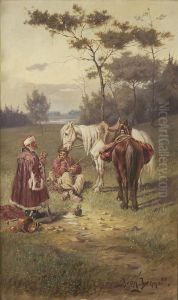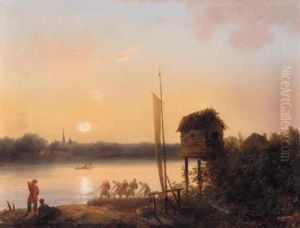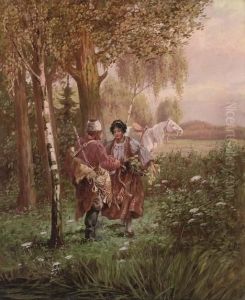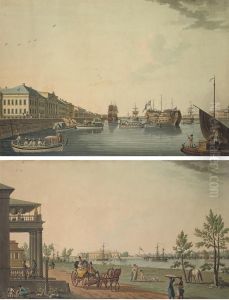Ivan Alekseevich Ivanov Paintings
Ivan Alekseevich Ivanov was a notable figure in the Soviet art scene, recognized for his contributions as a painter and graphic artist. Born in 1926, his early life was shaped by the complexities of the Soviet era, which would later influence his artistic direction. Ivanov embarked on his artistic journey at a young age, demonstrating a keen interest and innate talent for visual expression. His education and formative years in art were deeply intertwined with the ideological and aesthetic dictates of Socialist Realism, the state-sponsored art movement that sought to propagate communist ideals through a realistic portrayal of life under socialism.
Throughout his career, Ivanov navigated the intricacies of the Soviet art world, often balancing the party's requirements with his personal artistic exploration. His works, predominantly in painting and graphic art, reflected the typical themes of Socialist Realism, including the glorification of labor, the idealization of the Soviet people, and the depiction of the USSR's industrial and agricultural achievements. However, Ivanov managed to infuse his pieces with a sense of individuality and subtle critique, distinguishing his work from the more straightforward propagandistic art that was common at the time.
Ivanov's contributions to Soviet art were recognized with several awards and honors, solidifying his status as a respected artist within the Soviet Union. Despite the challenges posed by the political and social climate of his era, he remained committed to his craft, leaving behind a legacy that offers insightful perspectives on Soviet life and ideology. Ivan Alekseevich Ivanov's death in 1997 marked the end of a significant chapter in Russian art history, but his works continue to be studied and admired for their artistic merit and historical value. Ivanov's life and art remain a testament to the resilience and complexity of artists working under the constraints of the Soviet regime.




